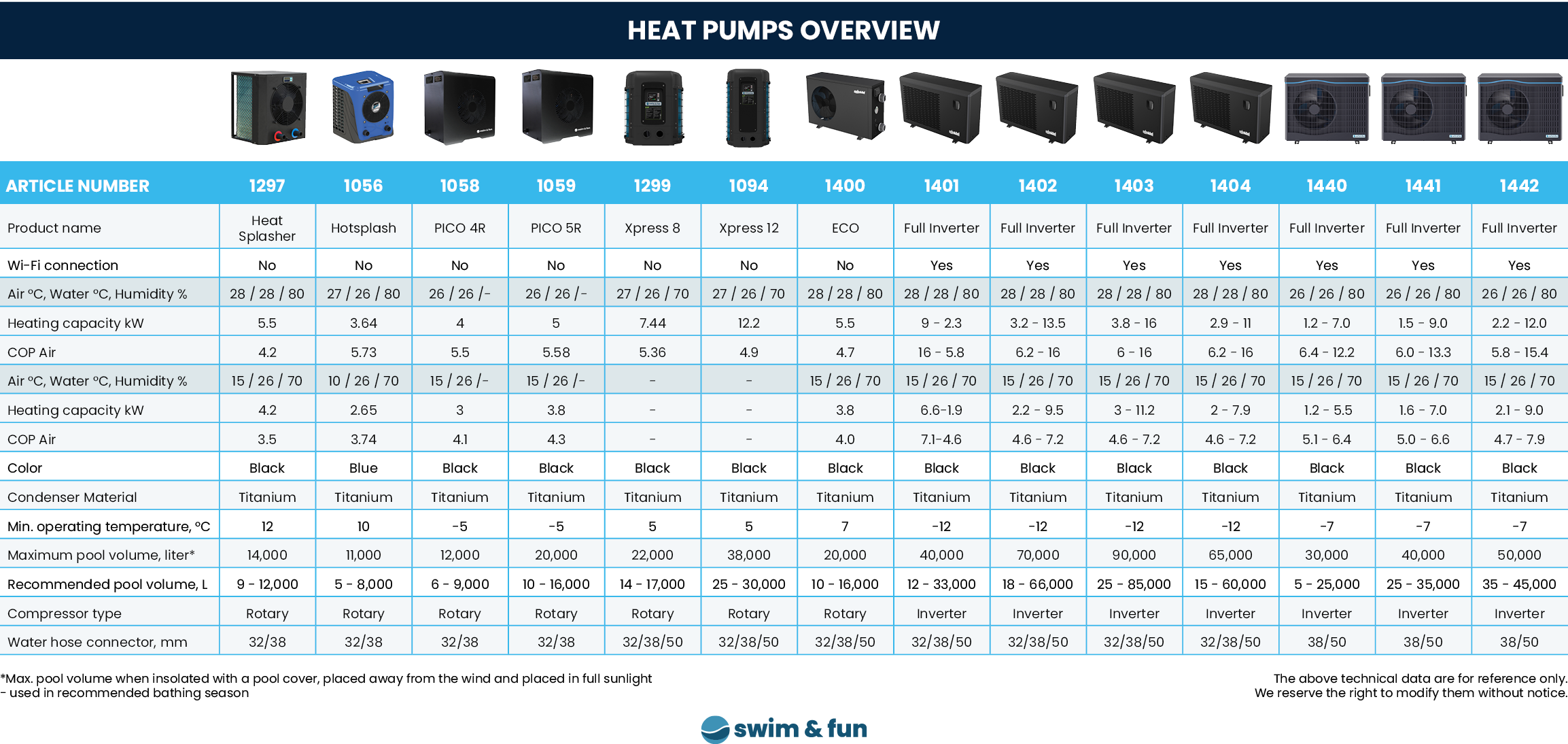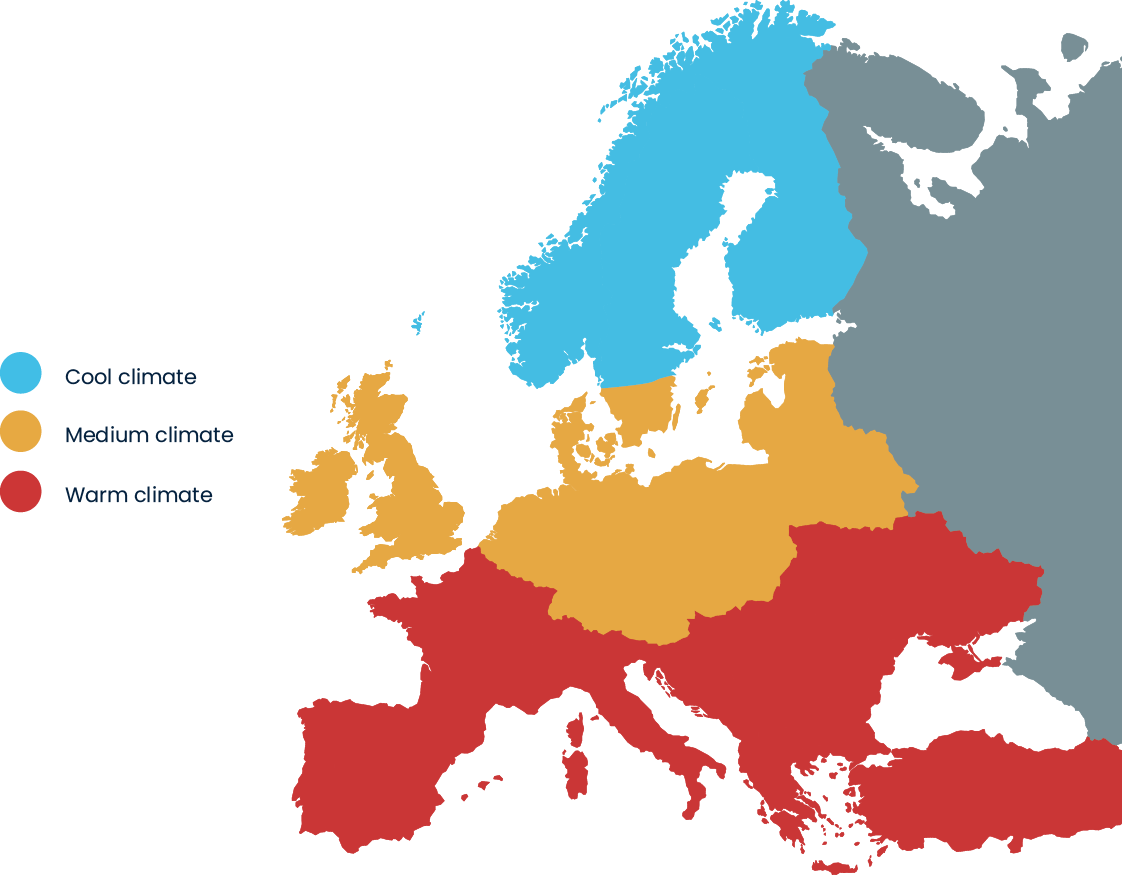At our northern latitudes, we must accept the fact that some summers do not give us enough sunlight hours to heat pool water much more than twenty degrees – and not for very long. Most people would prefer slightly higher temperatures for it to be properly enjoyable to use the pool regularly. Heating the pool water with a conventional electrical unit can, however, be a costly business. Next to solar energy, which is a free but also unreliable heat source, a pool heat pump is the most eco-friendly and cheapest form of heating for swimming pools. However, a heat pump has one major advantage over solar energy: You can count on the water to be warm when you want it to be – and to maintain a constant, pleasant temperature that you set yourself.
See our large selection of heat pumps here.
After start-up, you only pay for 20% or less of energy consumption
A heat pump is green energy because it “draws” energy out of the air and transfers it to the pool water. The amount of energy required to run the heat pump is minimal compared to the amount of heat it returns. A traditional “on/off” heat pump typically returns between 4 and 7 kW for every 1 kW of electricity you pay for. In maintenance energy-saving mode, an Inverter Pro heat pump, depending on the model and environmental impact, can return up to 16 kW for each 1 kW paid for.
This further extends your pool season
At the same time, a heat pump extends the pool season by several months. With a traditional heat pump, in practice, it means that in Denmark you can already get started with the pool season in mid-May and prolong it until mid-October.
Energy efficiency and what to expect
The energy consumption of the heat pump depends on how well the pool water is insulated against heat loss, especially at night. The better the pool is insulated, the lower the energy consumption.
Heat loss is greatest from the water surface.
Between 75% and 85% of the heat is considered to be lost via the surface. This means that the temperature can drop by 4-6 degrees over a single night. When the pool is warmed without the use of additional heat sources, or with solar energy, we always recommend that you use an insulating summer cover. The purpose is not just to retain the heat that builds up during the day, but also to minimise evaporation, which in itself has a cooling effect, and to keep airborne impurities out of the pool.
But particularly when you add heat from a heat pump or solar panels, the surface MUST be protected against heat loss, so that the energy has not been added in vain.
Use a summer cover, a sort of insulating “bubble blanket” which floats on the water but still allows the rays of the sun to pass through and heat the water. In addition to preventing heat loss, primarily as a result of minimal water evaporation, a summer cover also reduces the use of water care products. (Note: the summer cover must be completely removed before the pool is used).
An alternative to a summer cover could be a permanent pool roof installed on rails. The latter option also prevents unintended access to the pool.
Also remember to take into consideration the pool type and insulation. A free-standing plastic pool without insulation, for example, will require a higher capacity heat pump to keep the water at the desired temperature during the season. If in doubt, we always recommend that you choose a model with extra heating capacity rather than the slightly smaller model – especially in the Nordic region.

How to find the right heat pump
It is necessary to understand that the heat capacity and the performance of the pump depend on the climate you live in. Areas with cold climates have a shorter swimming pool season. Therefore, hot pool water in the north requires heat pumps with higher capacity than in medium to warmer climates.
The illustration is an approximate estimate of the climate differences, and thus an indication of what type of heat pump you should consider buying to get the right performance.

